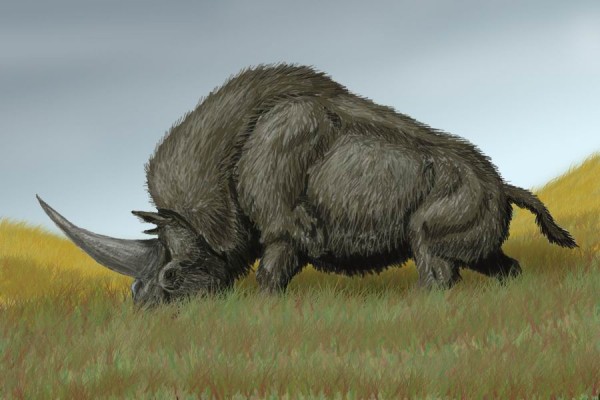By Ana Verayo, | March 29, 2016

The "Siberian unicorn" or the Elasmotherium sibiricum is actually an ancient rhino with an impressive horn.
Scientists uncovered a new fossilized skull of a "Siberian unicorn" where further examination reveals that this creature survived more than 300,000 years than previously thought.
According to Andrei Shpansky and the team from the Tomsk State University in Russia, with the help of radiocarbon bone dating methods, it was determined that this "unicorn" is apparently more accurately identified as a species of rhinoceros that possesses an impressive horn, that could have walked the Earth just 29,000 years ago. Prior studies say that this animal became extinct some 350,000 years ago until these new study.
Like Us on Facebook
This Siberian unicorn or scientifically known as Elasmotherium sibiricum, is a closer relative to a rhino than a horse according to scientists. The unicorn measures about 6.5 feet tall and spans 15 feet long, weighing a massive 9,000 pounds.
Its name was derived from the very long, single giant horn that was first thought to extend up to more than the total length of the rhino.
According to paleontologist Andrey Shpansky from the Tomsk State University, they discovered the skull in Pavlodar in the Irtysh region locate din northeastern Kazakhstan in Central Asia. The team believes that this skull most likely belongs to a massive male specimen of a very large individual age.
Shpansky explains that the body dimensions of this unique rhino is one of the biggest described in ancient literature where the proportions are typical.
The Siberian unicorn's habitat was known to thrive in a vast territory near the Don River in the eastern part of modern Kazakhstan. The team said that this skull discovery revealed that the region was long inhabited by the creatures in the southeastern West Siberian Plain. However, there is still no direct evidence to determine how the Siberian unicorn became extinct.
Researchers conclude that the south part of Western Siberia apparently became a sort of refuge for the Siberian unicorn where their populations became preserved for a long time as opposed to others that are not in this range.
Researchers also speculate that the these creatures might have migrated and then began to dwell in the southern areas of the region. The next step following this study is to conduct a massive radiocarbon study of the remains that are believed to be extinct some 50,000 to 100,000 years ago.
This new study is published in the American Journal of Applied Science.
-
Use of Coronavirus Pandemic Drones Raises Privacy Concerns: Drones Spread Fear, Local Officials Say

-
Coronavirus Hampers The Delivery Of Lockheed Martin F-35 Stealth Fighters For 2020

-
Instagram Speeds Up Plans to Add Account Memorialization Feature Due to COVID-19 Deaths

-
NASA: Perseverance Plans to Bring 'Mars Rock' to Earth in 2031

-
600 Dead And 3,000 In The Hospital as Iranians Believed Drinking High-Concentrations of Alcohol Can Cure The Coronavirus

-
600 Dead And 3,000 In The Hospital as Iranians Believed Drinking High-Concentrations of Alcohol Can Cure The Coronavirus

-
COVID-19: Doctors, Nurses Use Virtual Reality to Learn New Skills in Treating Coronavirus Patients








